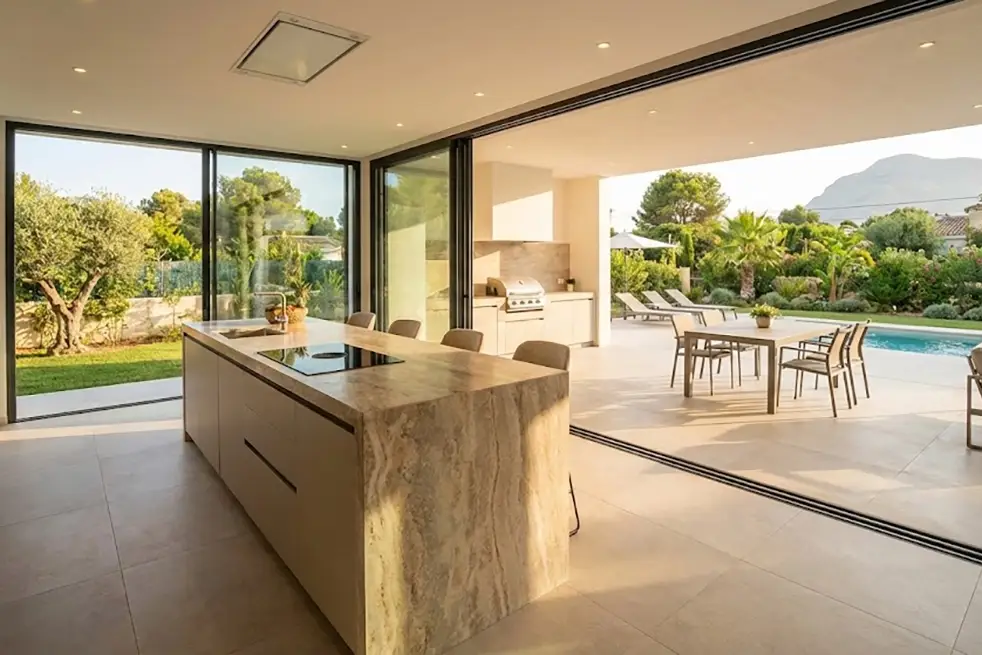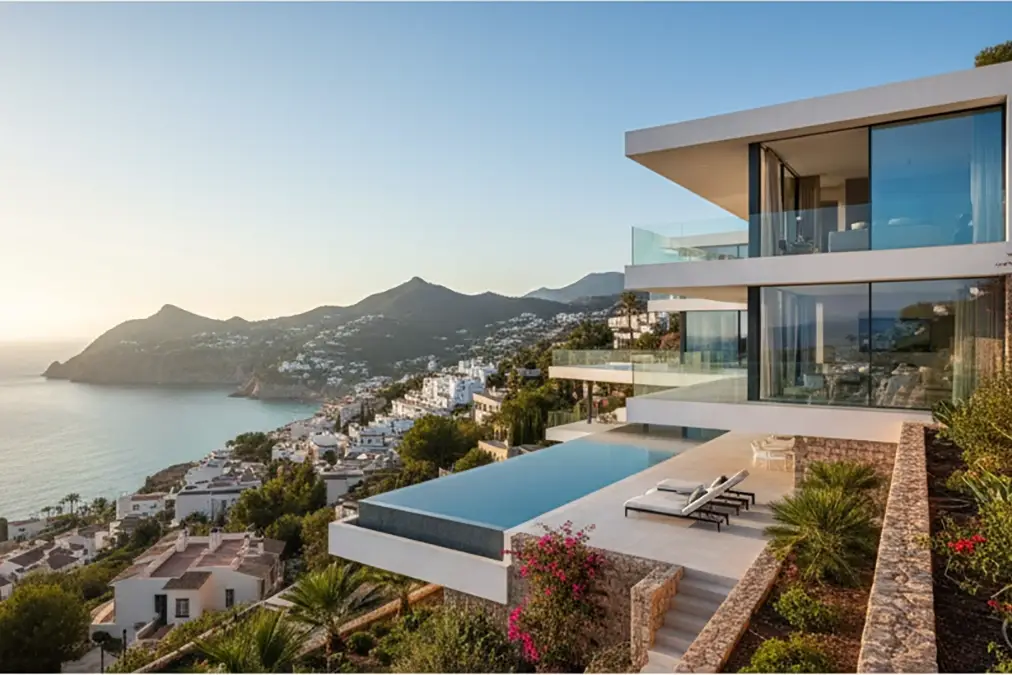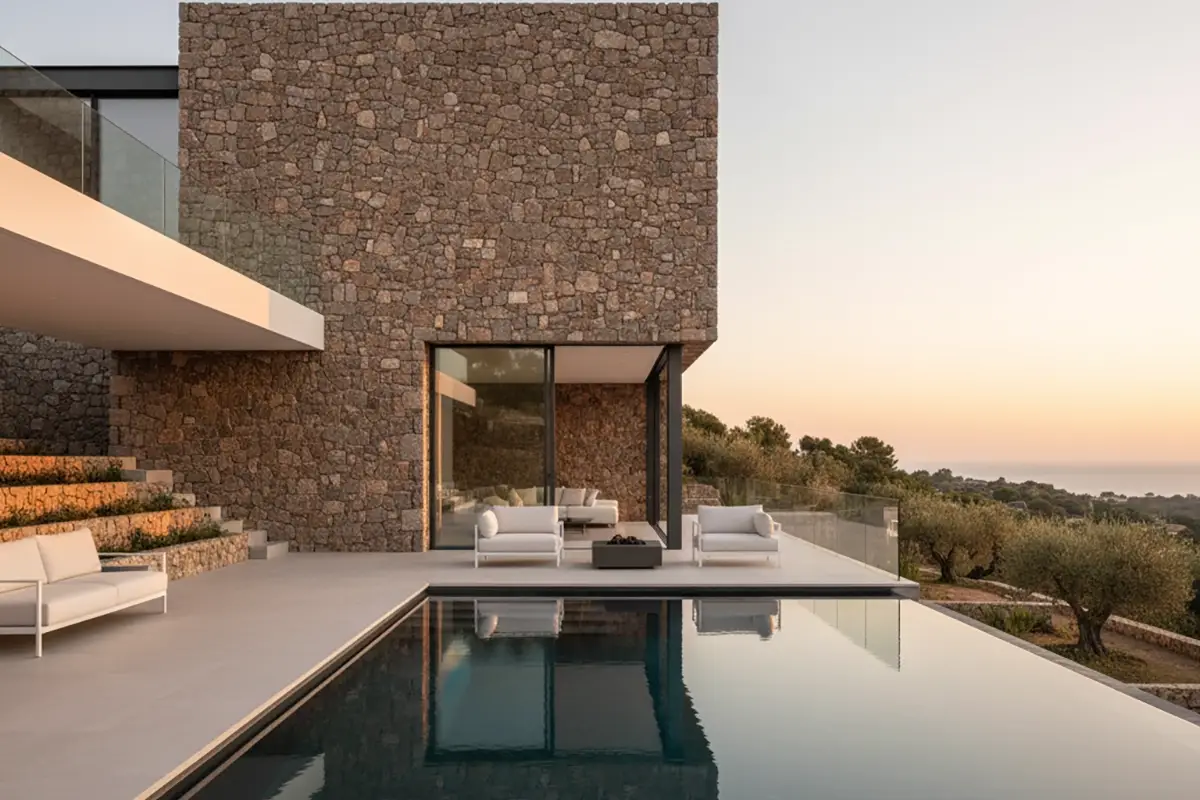The concept of home automation in 2026 goes far beyond asking a speaker to turn on a light. It is the revolution of the smart home on the Costa Blanca, where technology becomes invisible, essential, and predictive. Imagine waking up in your Jávea villa: the curtains open automatically, the house has already adjusted to your ideal temperature, and your morning playlist begins to play, all without you touching a single switch. At La Quinta Fachada, we are already designing these homes of the future, based on total integration.
The future of home automation: Beyond ‘Gadgets’
For years, home automation has consisted of separate apps: one for the lights, one for the air conditioning, one for the alarm. The smart home of 2026 puts an end to this.
We are talking about a centralised “brain” that acts as the home’s nervous system. In this total integration of home automation, all systems (lighting, climate control, security, entertainment, blinds, irrigation) communicate with each other. The result is a house that doesn’t just obey, but understands and anticipates.
The 4 pillars of home automation in 2026
This total integration of the future of home automation enables four advancements that will define luxury and comfort on the Costa Blanca.
1. Smart climate control: The house that learns from you
The climate control system of a smart home in 2026 isn’t just programmed. It learns from your habits. It knows you are 15 minutes away from home after a day at the beach in Moraira and activates the system to welcome you with the perfect temperature, optimising every kilowatt of energy.
2. Predictive security: The smart home that anticipates
Forget traditional alarms. Predictive security is the new standard in home automation for 2026. The system simulates your presence when you are away, detects unusual patterns (like a water leak) and alerts you, and can identify the family’s cars or grant temporary, controlled access.
3. Voice and gesture control: The invisible home automation interface
Physical switches will all but disappear. Voice control becomes sophisticated and contextual. A simple “cinema mode” command dims the lights, closes the blinds, and adjusts the climate control. Technology becomes invisible, with speakers integrated into the walls and control panels that blend into the design.
4. Sustainability and wellbeing: Home automation as an ally
Home automation in 2026 is sustainability’s greatest ally. The system manages energy intelligently, deciding whether it’s better to draw from the grid or your solar panels. It monitors indoor air quality and manages garden irrigation based on the weather forecast to avoid wasting water.
Designing for home automation in 2026: The key is the architecture
Here is the key that differentiates a house with “gadgets” from a truly smart home: it cannot be improvised. The integration of home automation into the architecture must be planned from the very first sketch.
At La Quinta Fachada, when we design a villa, we are already deciding where the tech room will go, how the coving for indirect LED lighting will be designed, where the invisible speakers will be placed, and how the large picture windows will be motorised.
La Quinta Fachada: Building tomorrow’s smart home, today
Home automation in 2026 is not a promise; it is a reality we are already implementing. It is the perfect symbiosis of cutting-edge design and state-of-the-art technology, creating homes on the Costa Blanca that are not only beautiful but profoundly intelligent.
If you are thinking of building a home that is ready for the future, contact us. Let’s talk about how your home can start taking care of you.




